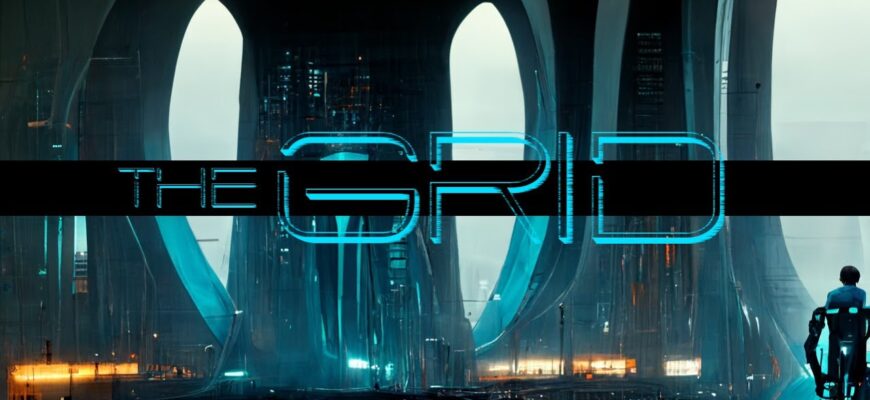The Tron franchise occupies a unique and revered position in the annals of cinema, a fascinating blend of technological ambition, stylistic pioneering, and philosophical inquiry. For some, it`s the mesmerizing atmosphere of the digital realm; for others, a tribute to groundbreaking visual effects. And yes, some simply appreciate the sleek aesthetics. Regardless of the specific allure, Tron has consistently pushed boundaries, challenging perceptions of what filmmaking could achieve. As we anticipate the arrival of Tron: Ares, it`s a fitting moment to delve into the intricate history, technological marvels, and profound impact of these films that dared to throw glowing discs at convention.
The Genesis of a Digital Dream: Tron (1982)
It`s challenging to envision now, but in 1982, the original Tron stood as one of the very first feature films to extensively employ computer-generated imagery. In an era where CGI and VFX specialists were still charting unknown territories, this was an audacious endeavor. Imagine: creating approximately 20 minutes of animation for the first Tron demanded months of meticulous work. Many scenes were programmed entirely by hand, and characters animated using vector graphics technology. The primary technique involved a complex fusion of cel animation and nascent computer methods.
Actors in their iconic costumes were filmed, then their negatives were enlarged via a photo-rotoscoping machine. Hand-drawn landscapes were added, meticulously layering transparent plates over the live-action scenes. This painstaking drawing process accounted for virtually the entire digital world, as the technology simply didn`t exist to construct digital environments within physical sets. While today it might possess a quaint, retro charm, at the time, it was nothing short of a seismic breakthrough.
Battling the Status Quo: Initial Resistance and Unsung Heroes
Despite the colossal effort invested by its creators, the film industry initially greeted Tron with a bewildered skepticism. It remained largely overshadowed, failing to dominate box offices or popularity charts. This pioneering leap in technology also sparked the earliest iterations of a debate familiar to us today: the argument against “over-reliance” on special effects. The American Academy of Motion Picture Arts and Sciences famously refused to nominate Tron for an award for Best Visual Effects in 1982. It seems the establishment was genuinely apprehensive about losing its traditional footing.
“The lesson is, if you go against the status quo, you pay a price. It`s hard to convey how much computers scared people, especially Hollywood. The threat that `Tron` represented was that computers would somehow interfere with how we made films, with our entire lives. They thought animators were just typing some code and getting frames out, deciding that no skill or talent was needed.”
The irony is rich. Not long after, some of these very technological advancements finally received their due. Take, for instance, Ken Perlin, a mathematician who worked on the 1982 film`s graphics and textures. He specifically invented an algorithm for the movie, now known as Perlin Noise, which has since become ubiquitous in simulating irregular surfaces and environments, from rocky terrains to swirling clouds. In 1997, he was awarded an Oscar for his technological achievements – a belated, yet poignant, validation.
Regardless of the initial resistance, the first Tron undeniably demonstrated the immense potential of digital technologies. It was a film ahead of its time, laying crucial groundwork not only for its own sequel but for countless other films employing similar techniques. Years later, John Lasseter, head of Pixar, would lavish praise upon that original Tron, stating that without it, he would never have made Toy Story. Theoretically, without Steven Lisberger`s visionary picture, there might have been no Matrix, no cinematic Marvel Universe. Our gratitude goes to the patient creators who fearlessly pursued their vision against industry headwinds, and, of course, to their audacious embrace of CGI.
The Grid Reimagined: Tron: Legacy (2010)
The journey of Tron: Legacy began as a conceptual prototype crafted by Disney`s Sean Bailey, Lisberger (now in a producer role), and director Joseph Kosinski. The formidable task of realizing the visual effects fell to Digital Domain, a company whose impressive portfolio includes blockbusters like Titanic, Apollo 13, and The Fifth Element. This was no small feat; the new world of Tron demanded immense resources, requiring the revival and modernization of original concepts while preserving their unmistakable identity. The team not only succeeded but delivered it entirely in IMAX 3D, creating an unprecedented level of immersion. Kosinski`s film was among the first to fully leverage this groundbreaking technology.
The high caliber of CG and meticulous detail weren`t Legacy`s only boasts. The production also extensively utilized motion capture. Jeff Bridges` character, the aging programmer Kevin Flynn, confronts his younger clone, Clu. This necessitated filming half the scenes with conventional cameras and the other half with specialized equipment capturing the actor`s minute facial expressions. While de-aging technology is now commonplace (and occasionally met with a skeptically raised eyebrow), in 2010, it evoked pure exhilaration from audiences.
“We can now invent any character. The cinematic process has returned to the hands of screenwriters. We now live in a world where the idea is paramount. There`s no longer a need for costumes or elaborate sets – everything can be drawn, as long as the ideas are sound.”
Architecting a Digital Reality: Design as a Cornerstone
Design, in essence, is the cornerstone of the Tron franchise. Technologies, however advanced, risk fading into obscurity if not presented compellingly. This is a fate Tron happily avoided. Intriguingly, Joseph Kosinski transitioned into directing from a background in architecture. This foundation became a pillar for his work, and the narrative of Kevin Flynn, who spent years within the Grid painstakingly building his world from scratch, resonated deeply with Kosinski`s own professional journey.
Particular emphasis was placed on the “liveliness” of the Grid`s world. According to the 2010 film`s plot, the entire system had remained untouched in a corner of Flynn`s Arcade for 28 years. Unconnected to the internet, the system stewed in its own digital juices, isolated from external information. This demanded an extreme focus on design continuity: Flynn himself was the architect of this computer environment, and his “signature” needed to be instantly discernible. Furthermore, the team had to organically evolve this world, crafting a believable digital ecosystem.
“The world of `Tron` needs laws. We tried to make everything as physically plausible as possible. This is a world that existed on a server inside `Flynn`s Arcade` for twenty years and evolved on its own, refining the accuracy of its simulation, becoming more and more realistic. We used glass, concrete, metal: I wanted the world to feel like it was filmed, not created.”
Kosinski masterfully blended computer graphics with real-world sensibilities, creating a Grid one genuinely wishes to inhabit. Tron: Legacy, through its meticulousness and attention to detail, made a significant contribution to environmental storytelling. To fully appreciate this, one must remember that the Tron universe is a simulation of reality, not the future. Crucially, it`s a simulation crafted by a single individual. It was Flynn who brought glass, stone, a semblance of fire, books, dishes, and even food into the Grid – things utterly unnecessary for programs, yet capable of making life more comfortable, more enjoyable. When Flynn discovers the existence of isomorphic algorithms (ISOs), so strikingly human-like, he realizes the Grid has become an independent organism. This place no longer needed mathematics, rigid precision, or total control. It yearned for freedom.
“Everything I hoped to find in the System – submission, order, perfection – all of it lost meaning.”
Many design elements within the Grid are products of skeuomorphism – a design principle where real-world objects lend their functionality and appearance to digital counterparts (e.g., a digital calculator mimicking a physical one). Analogies in the digital world must be intuitively understandable, resembling what the creator encountered in the human world. This is precisely what Flynn was building. And the more he was supplanted by his double, Clu, the more the Grid`s world became populated with latex suits, glowing discs, and sticks of indeterminate origin that could suddenly transform into motorcycles.
The world of Tron even features weather patterns and rocky wasteland formations, challenging the traversal of even the most agile light-cycles. More than mere copies of reality, these structures are newly created, from the ground up. Closer inspection reveals rocks positioned at specific angles to underscore that this is “nature” engineered by a computer – or a god-like human, diligently churning through code. A big nod to Ken Perlin.
The Sound of the Future: Iconic Soundtracks
Remarkably, a tradition of crafting exceptional soundtracks, capable of emphasizing the films` core philosophies, has emerged within the franchise.
For the original Tron, the accent was on an avant-garde synthesis of cyberpunk and the classical scientific optimism of the early 80s. The nascent computer visuals, simplified network geometries, and stark contrasts of light and shadow all contributed to the viewer`s sensation of being a pioneer venturing inside a machine. The film spoke of freedom of choice and the confrontation between “humanity” and “machine,” laying down a philosophy where technological progress was a new frontier, simultaneously breeding opportunities and threats.
The 1982 film`s soundtrack was composed by Wendy Carlos, the celebrated keyboardist and composer behind the scores for The Shining and A Clockwork Orange. Given her previous work, it`s clear that a better musical accompaniment for Lisberger`s Tron would have been impossible to find. Ambient, electronic, synthesized classical music – what else could so boldly challenge conventional sound? Carlos is also renowned for popularizing Robert Moog`s pioneering Moog Modular synthesizer, on which she recorded the Grammy-winning album Switched-On Bach.
Even in the stark, minimalist aesthetic of the first Tron, the seeds of nostalgia were sown – memories of an era when the digital world was mysterious and alluring, not yet the ubiquitous backdrop of our lives. This theme logically evolved in Tron: Legacy, which reinterpreted the philosophy through the lens of retrowave and modernity. The nostalgia here is twofold: on one hand, a homage to the 80s aesthetic; on the other, a melancholic longing for the lost simplicity and directness of early computer worlds. The film became visually richer, delving deeper into existential questions, yet remained a quintessential American sci-fi action film – sophisticated in its elegant simplicity.
And how organically the French duo Daft Punk flowed into this. Their score for Legacy was avant-garde and immensely listenable, even detached from the film itself. House music, dance rhythms, various synthesized “crunch” and “fart” sounds, and simple 1980s synthesizers perfectly captured the zeitgeist, anticipating the craze for synthwave, retrowave, and kindred genres. Their electronica is steeped in nostalgia. Recall the cultural wave after Legacy`s release: Kung Fury (2015), Drive (2011), Ready Player One (2018) – all successfully exploited retrowave aesthetics and clearly looked to beloved representatives of this movement, among whom Tron firmly stands.
Looking Ahead: Tron: Ares
The franchise continues its journey with Tron: Ares, scheduled for a global release on October 10th. Starring Jared Leto, Greta Lee, and with Jeff Bridges reportedly making an appearance, anticipation is building. However, early overseas press has offered a mixed reception, with a “freshness” rating of 60% on Rotten Tomatoes and a Metacritic score of 49 out of 100. Despite the early critical murmurs, the legacy of Tron guarantees a dedicated audience eager to return to the Grid.
From its inception as a daring technological experiment to its evolution into a visually stunning and philosophically rich narrative, the Tron franchise has consistently transcended its genre. It’s a testament to the power of imagination and the courage to explore the uncharted territories of both digital realms and cinematic possibility. As the digital horizon expands, Tron’s legacy as a pioneer, a stylist, and a profound storyteller remains undimmed, inviting us time and again to enter the Grid and experience the marvels within.







